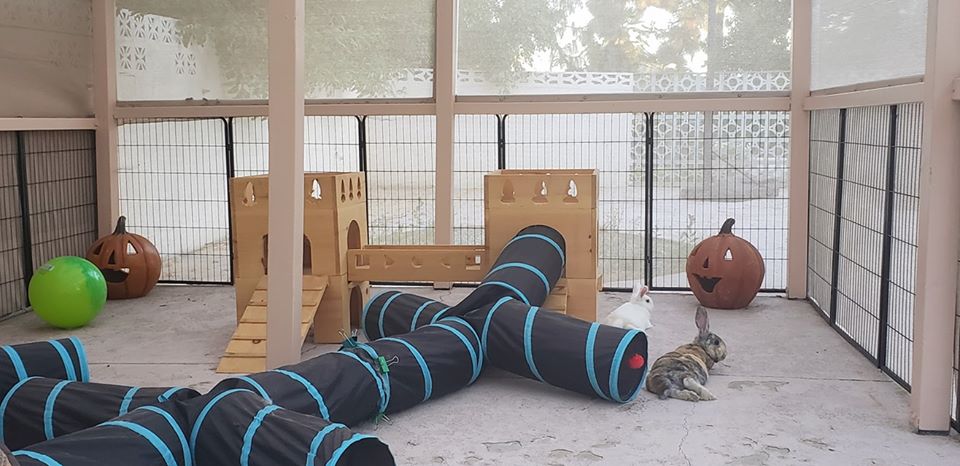- Home
- Rabbit Cages and other terrible ideas
- Housing Rabbits Inside Or Outside
Housing Rabbits Indoors or Outdoors
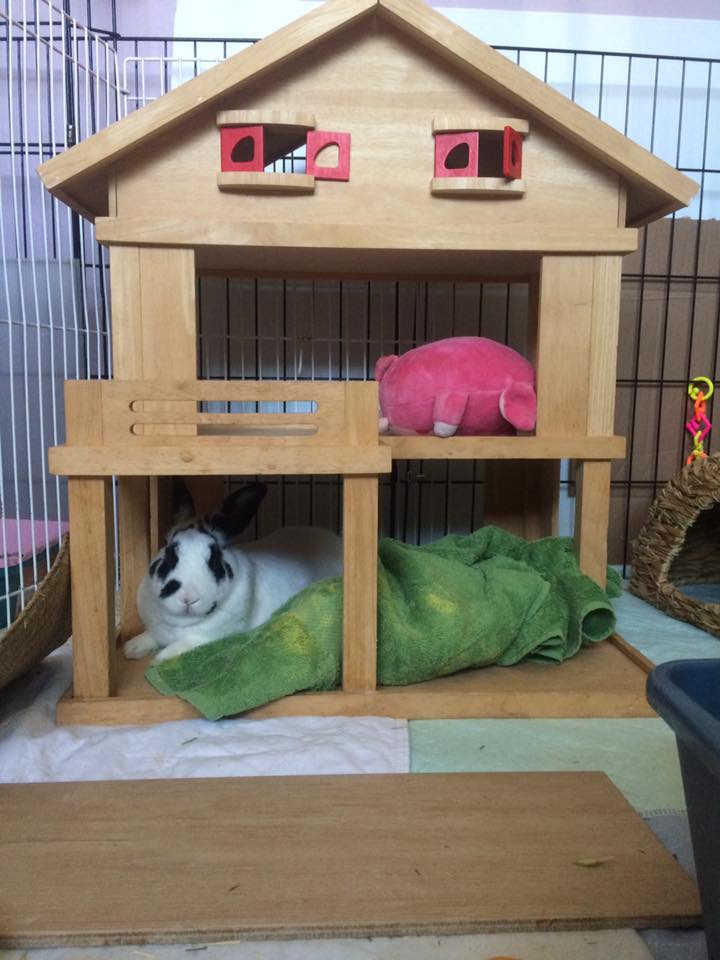 Joey relaxing in his dollhouse.
Joey relaxing in his dollhouse.Location, Location, Location
Should rabbits be inside or outside? Where is the best place? This is a controversial topic among rabbit enthusiasts. There are many people who believe rabbits should be exclusively housed outside, either in the backyard in a hutch or in the garage. Others believe rabbits should live inside, but have the experience of exploring the garden or patio, while other owners believe rabbits should be kept inside 24/7. What is the right answer?
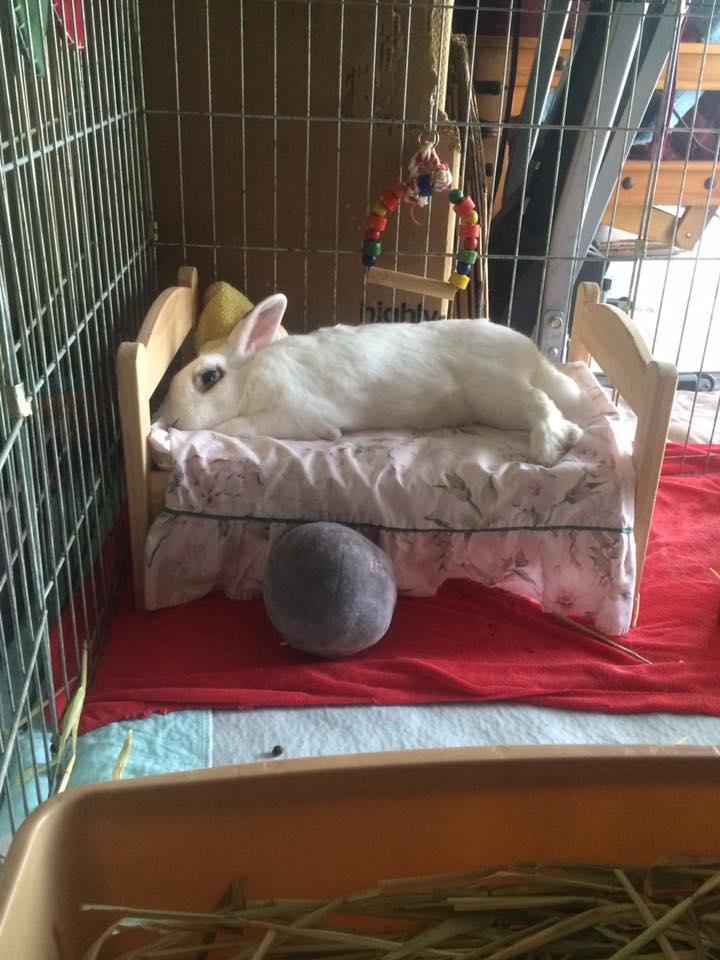 Cupcake in bed.
Cupcake in bed.Some of this decision is answered for you based on where you live (e.g. living in an apartment). Owners should always keep in mind that rabbits are prey animals. That means the way we should interact, communicate and care for them will always be different than how we live with predators such as dogs or cats. In all my years of owning rabbits, they have always remained inside 24/7, and there are several reasons for this:
- They are a prey species. My neighborhood has dogs, cats and occasionally birds of prey. Other people may share their neighborhoods with raccoons, coyotes, mountain lions, weasels, snakes and maybe bears. Nothing is more terrifying than having a coyote trying to bite through the cage or dig his way into the pen. Rabbits - even our pampered domestic pets - still retain their fear of predators. Quite often they will panic and can sometimes have a heart attack just by being aware of a predator nearby (I have met a couple of clients who had lost their bunnies this way). Do not stress your pet bunny out needlessly.
- They are escape artists. For those who have had rabbits for a long time, you know that bunny-proofing your house is an ongoing process. You may initially cover the basics - covering cords, putting valuable stuff up high, etc. However, as time progresses, you discover all the naughty places your rabbit cannot resist, or perhaps you get a new bunny who has thought of original ways to get into trouble. If you have a yard, patio or balcony, you have one shot at getting it right. The fencing needs to be solid. The gates need to be closed. Flower beds may need to be blocked off. Barriers need to be put in the ground to prevent the bunny from burrowing out (or predators from burrowing IN). If you miss anything, your bunny may be gone (or eaten) faster than you expect. There are no do-overs.
- Parasites. In all my years of grooming rabbits, I’ve rarely met an indoor rabbit who has had fleas. Parasites such as fleas and worms are more likely to find their way to an outdoor rabbit. An outdoor rabbit is also more likely to get flystrike. This is when flies are attracted to wet fur, feces or urine on the rabbit. They will lay eggs on the rabbit, and when the maggots hatch, they eat into the host’s flesh. Flystrike is a painful and often fatal condition. Of course an indoor rabbit may still get parasites, especially if they share a home with a dog or cat that goes outside, but the risk is minimized.
If mosquitoes are an issue in your area, this is something you need to keep in mind. Myxomatosis is a viral disease effecting the mucous membranes. It is quite often deadly disease and can be transmitted by mosquitoes. - Heatstroke. Rabbits regulate their body temperature primarily through their ears. They have one set of sweat glands located on their upper lip and a nice thick fur coat. This means they are sensitive to heat and can develop heatstroke between 80F-85F (26C-29C). Here in Southern California, that means it’s too hot for bunnies about 8-9 months of the year. I’ve had several people over the years tell me that they have their bunny outside in the shade and ask if that is good enough. When it’s 110F (43C), shade isn’t going to drop the temperature 30 degrees. Bring the bunny inside and crank up the air conditioner. There is also the danger that you will forget about that bunny you took outside to get some fresh air. I’ve also had clients tearfully tell me how they let their bunny outside, ran an errand and forgot about the bunny until it was too late.
- Socialization. Rabbits are group animals. They are happiest with another bunny-friend and being part of the family. Being outside while the rest of the family is inside is a lonely way to live. This separation makes it hard for rabbits to become comfortable around people, and it makes it difficult for owners to remain interested in their pet.
- Health. Without constant interaction, it is difficult for owners to pick up subtle differences in health. Rabbits tend to hide illnesses. If you are not familiar with your rabbit’s habits, you can miss something critical and may not notice that your rabbit is sick until it’s too late. It is so important to act on any injuries or illnesses since some issues give you a window of just a few hours to help the bunny if there is any chance to save your pet. The faster you can address the problem, the better the bunny’s chance of a recovery.
- Rabbit Hemorrhagic Disease. The Rabbit Hemorrhagic Disease Virus has been endemic to Europe and Australia for decades, but it has been a new headache for rabbit owners here in North America. At the time of this writing, the disease is now endemic to the West Coast of the United States and steadily progressing eastward, killing both wild and domestic rabbit species alike. This is a highly contagious and deadly disease. Outdoor rabbits are at a high risk of contracting this. If you do keep your rabbits outside or let them exercise outside, please vaccinate your bunnies.
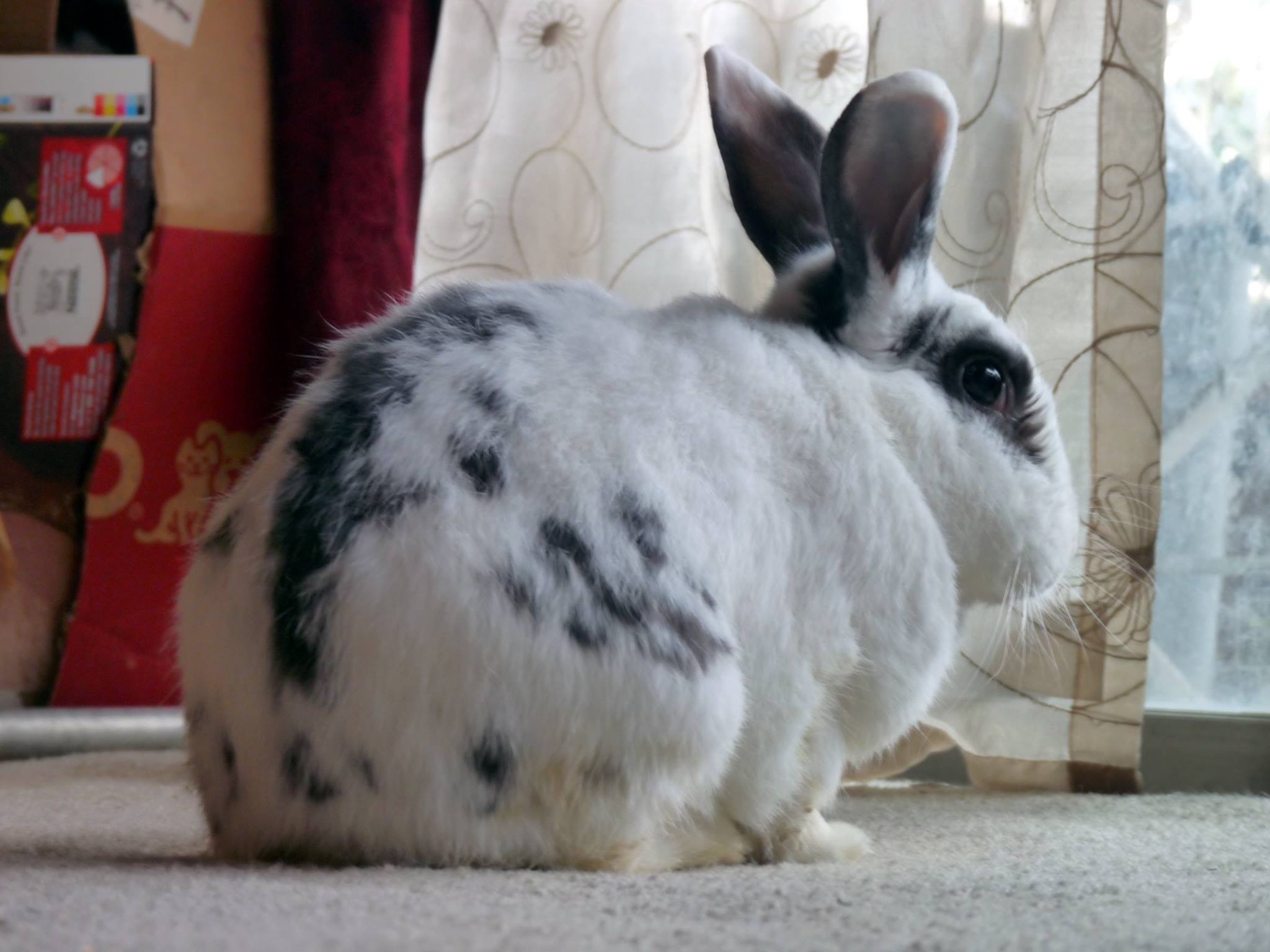 Nat
NatBut won’t the bunny feel deprived by staying inside 24/7? Probably not, but it also depends on the individual bunny. I’ve had numerous rabbits in my house - some I’ve owned and some who have stayed for just a couple of weeks. Not one of them has spent more than a minute or two looking outside my sliding door or large living room windows. A couple of them have enjoyed passing out in a sunbeam, but most of them have enjoyed their “exercise” time by napping under the couch or table. I also keep them entertained with a variety of toys, whether they like to chew or dig, there are plenty of options for them to keep busy between naps.
Vitamin D Deficiency
Vitamin D is essential in the absorption of calcium, which helps in the mineralization of bones and teeth. Although Vitamin D is added in many pellet brands, a few studies have shown that rabbits housed exclusively indoors exhibit low Vitamin D levels in the serum. Dental disease is a common problem for rabbits, and some issues can be exacerbated by the lack of Vitamin D. If your bunny does not receive enough Vitamin D in the diet and is exclusively inside, this issue may be relevant. Please note, windows will block UVB light from the sun. This band of UV light is what is responsible for skin to produce Vitamin D.
Personally, this has not been a concern of mine, even though my rabbits are exclusively indoors. However, if you have a bunny who is inside all the time and has a history of dental problems, it may be worth talking to your vet about Vitamin D deficiency at your bunny's next checkup.
This does not mean you need to leave your bunny outside all day. It may be easily resolved by opening the window or giving your bunny 15 minutes of outdoor supervised time.
To read the in-depth study about dental disease in rabbits, click here.
The Outdoor Experience
If you decide to allow your rabbit outside, it must be supervised and it must be in a safe space. People have set up a pen in the garden or utilized a covered patio or balcony, or built a covered run.
The photo above is an example of a 15ftx22ft bunny run created by Zooh Corner Rabbit Rescue in Pasadena, California. This is a completely enclosed play area with pen panels surrounding the lower half and shade cloth overhead and sides to protect from birds of prey and bugs. The area has lots of toys for the bunnies to explore and a seating area for the humans to relax.
As awesome as this patio area is, bunnies are not kept out here. Just like a playground for kids, this is only a place for bunnies to exercise and have some fresh air. In extreme heat, the bunnies are kept inside.
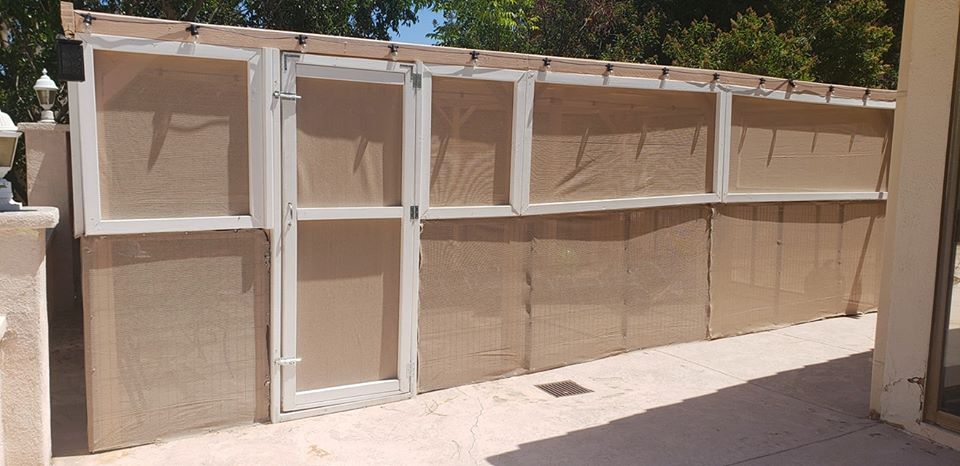 The bunny run from the outside. The bunny run from the outside. |
 The bunny run from the outside at night. The bunny run from the outside at night. |
